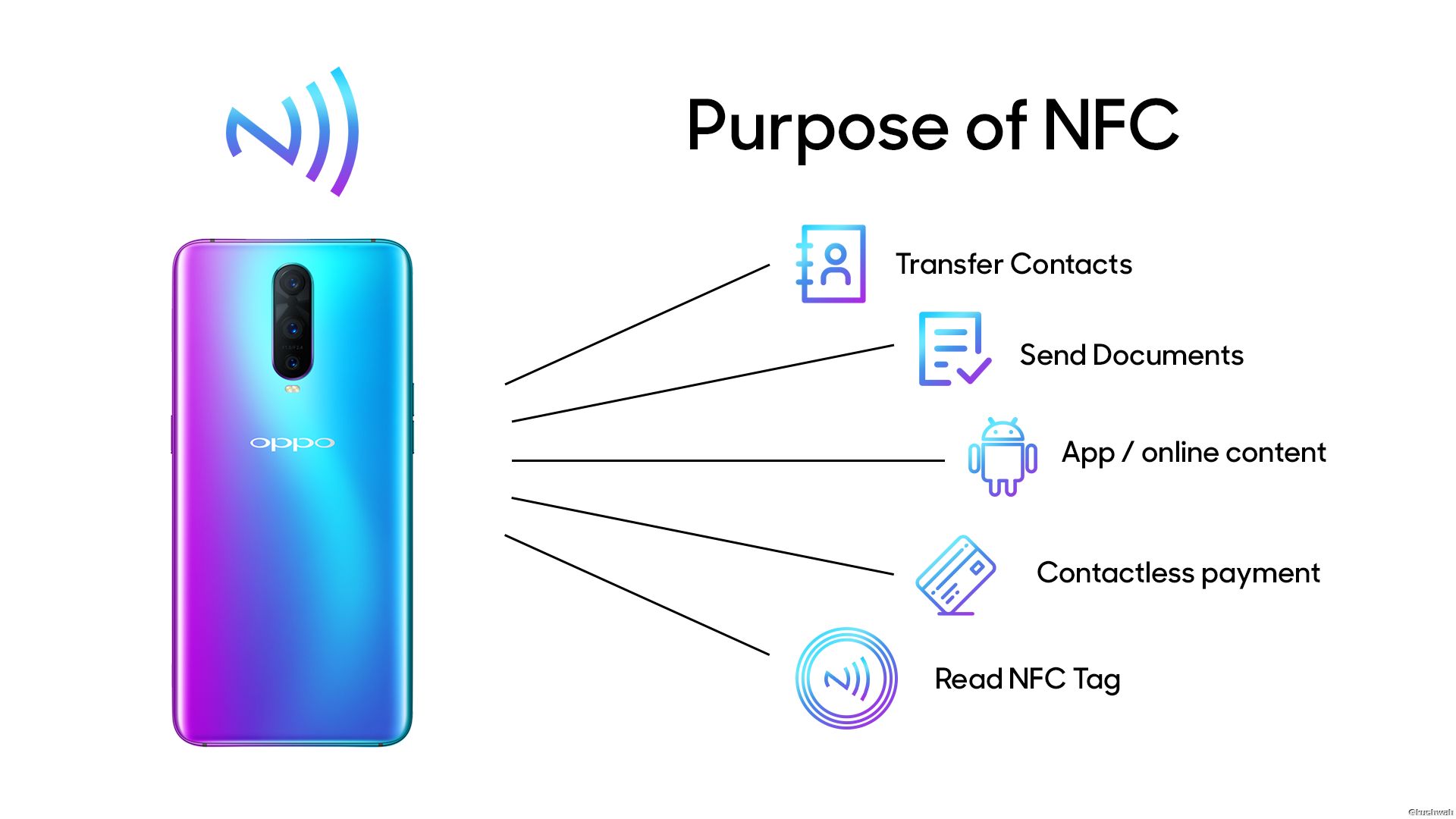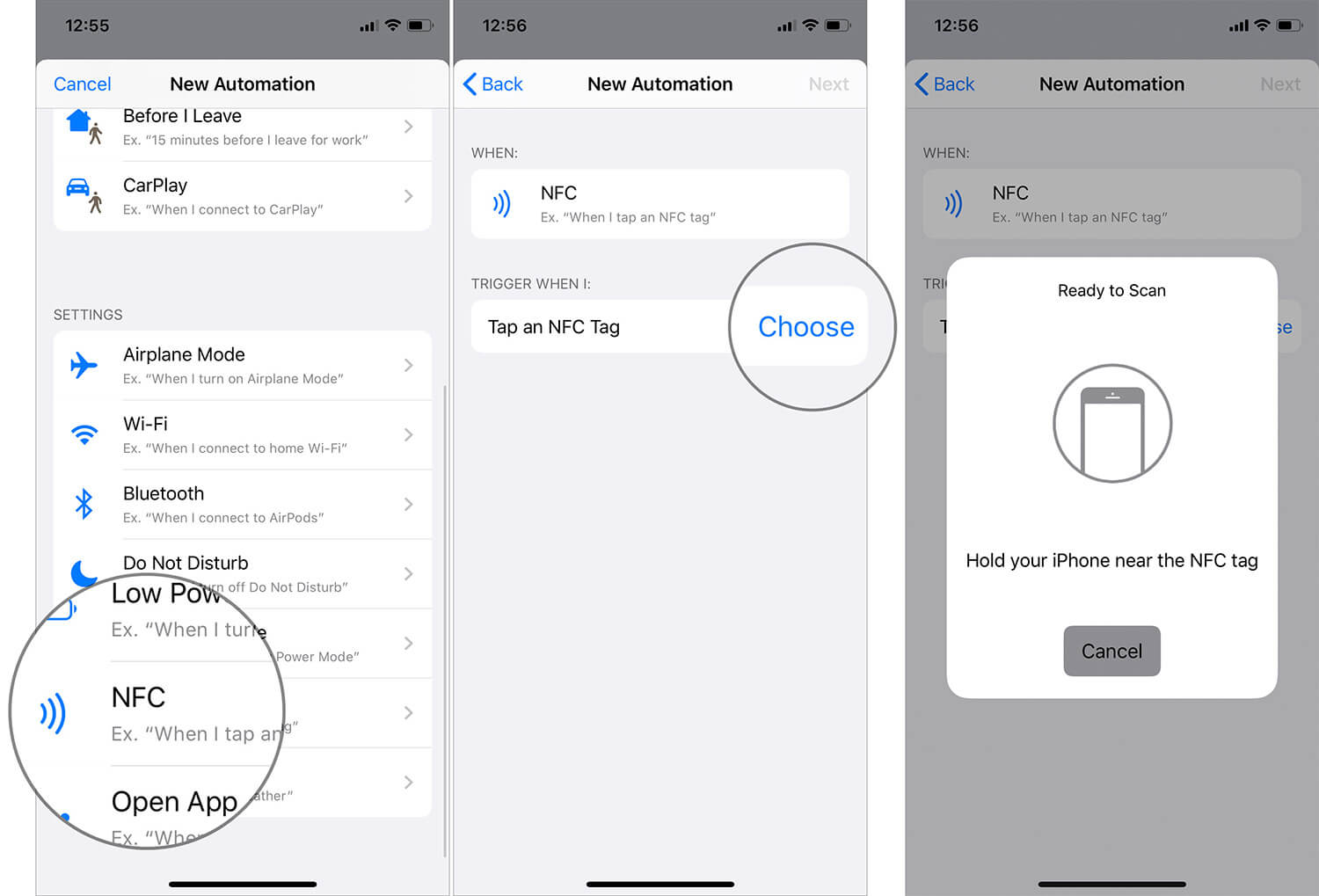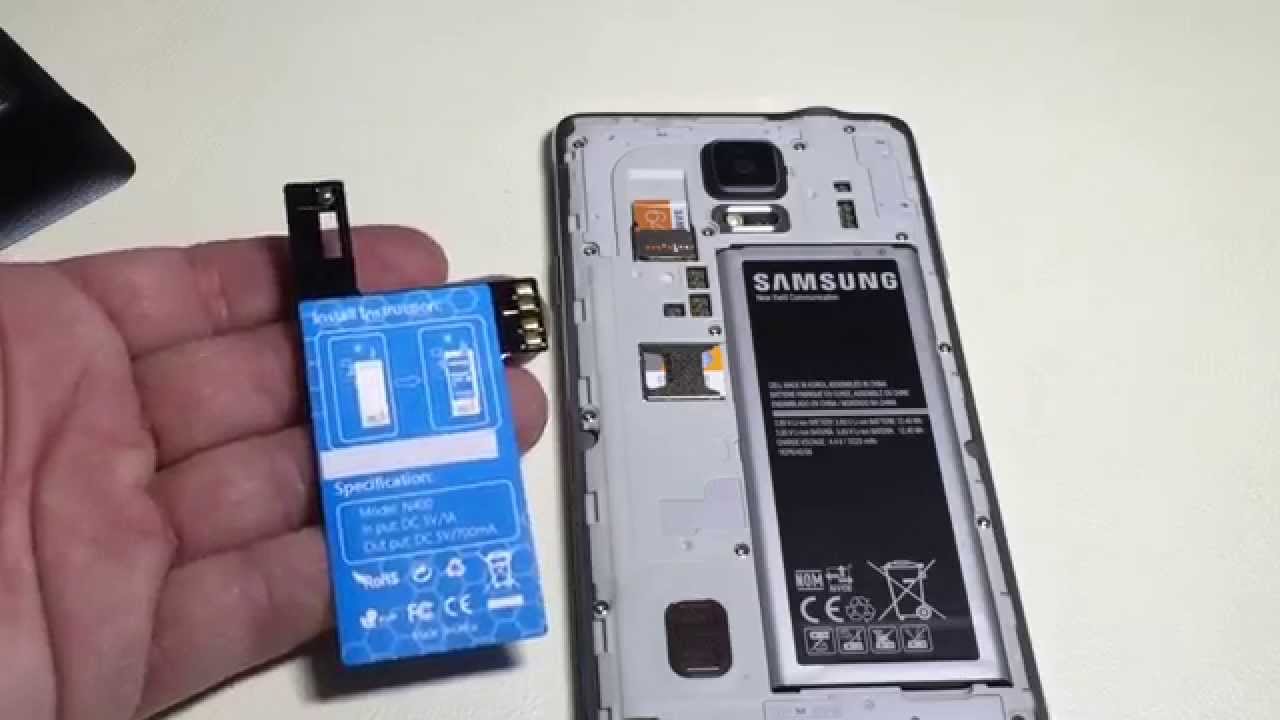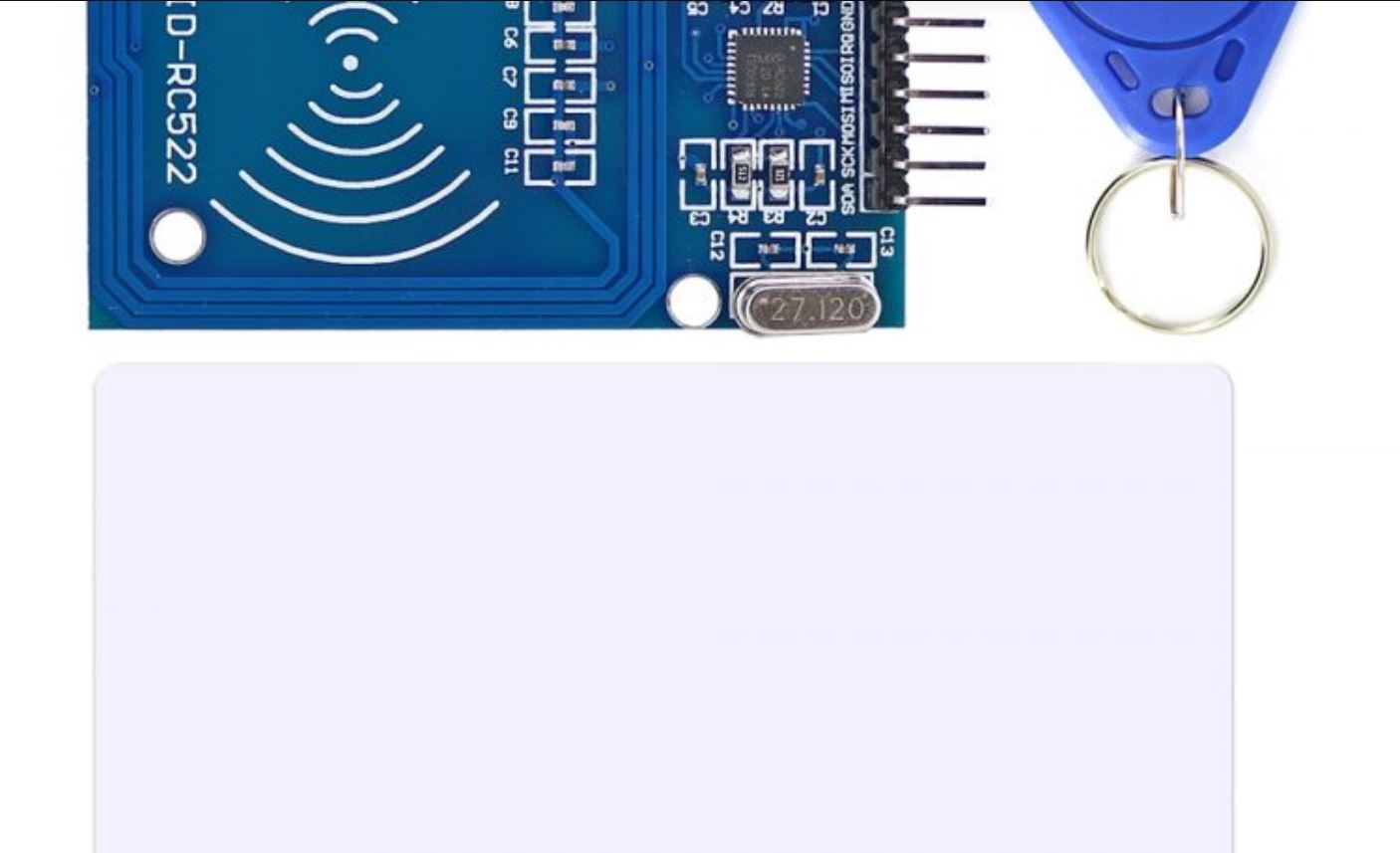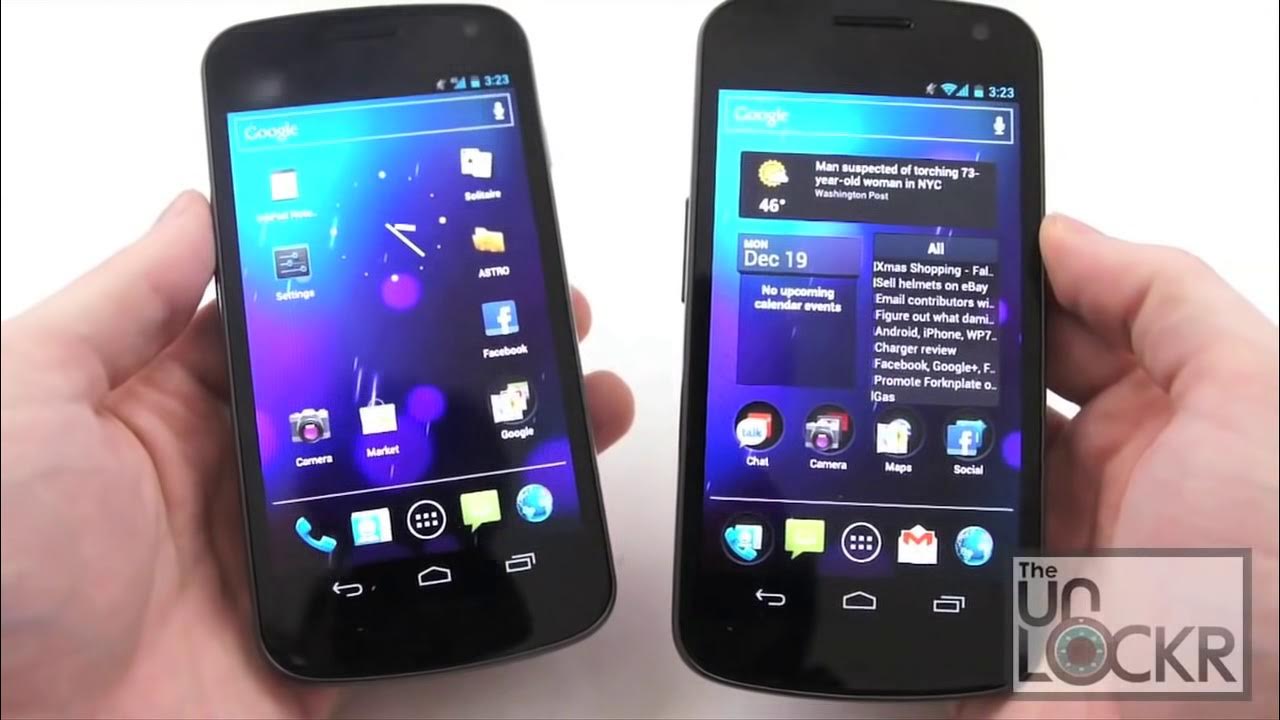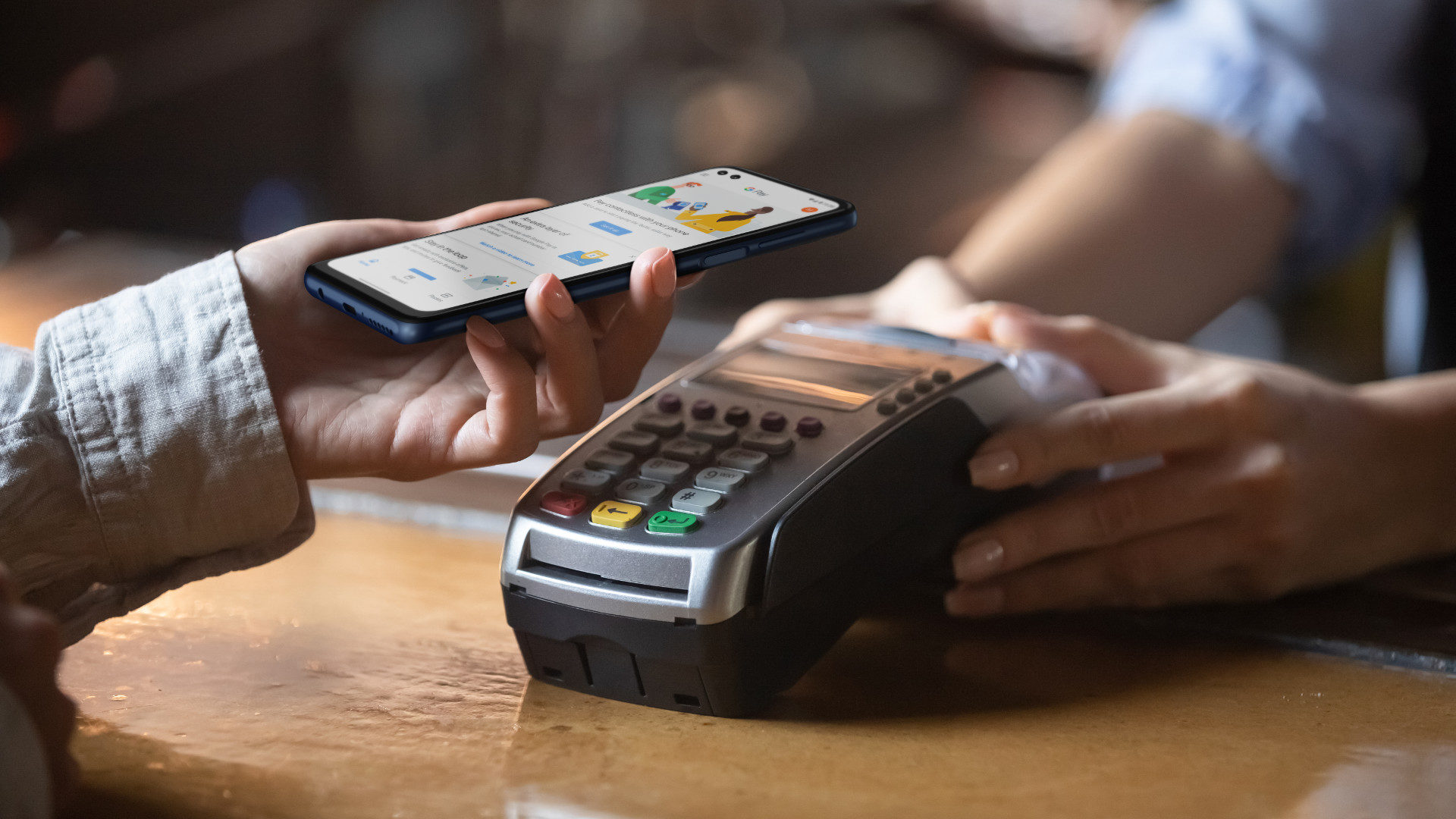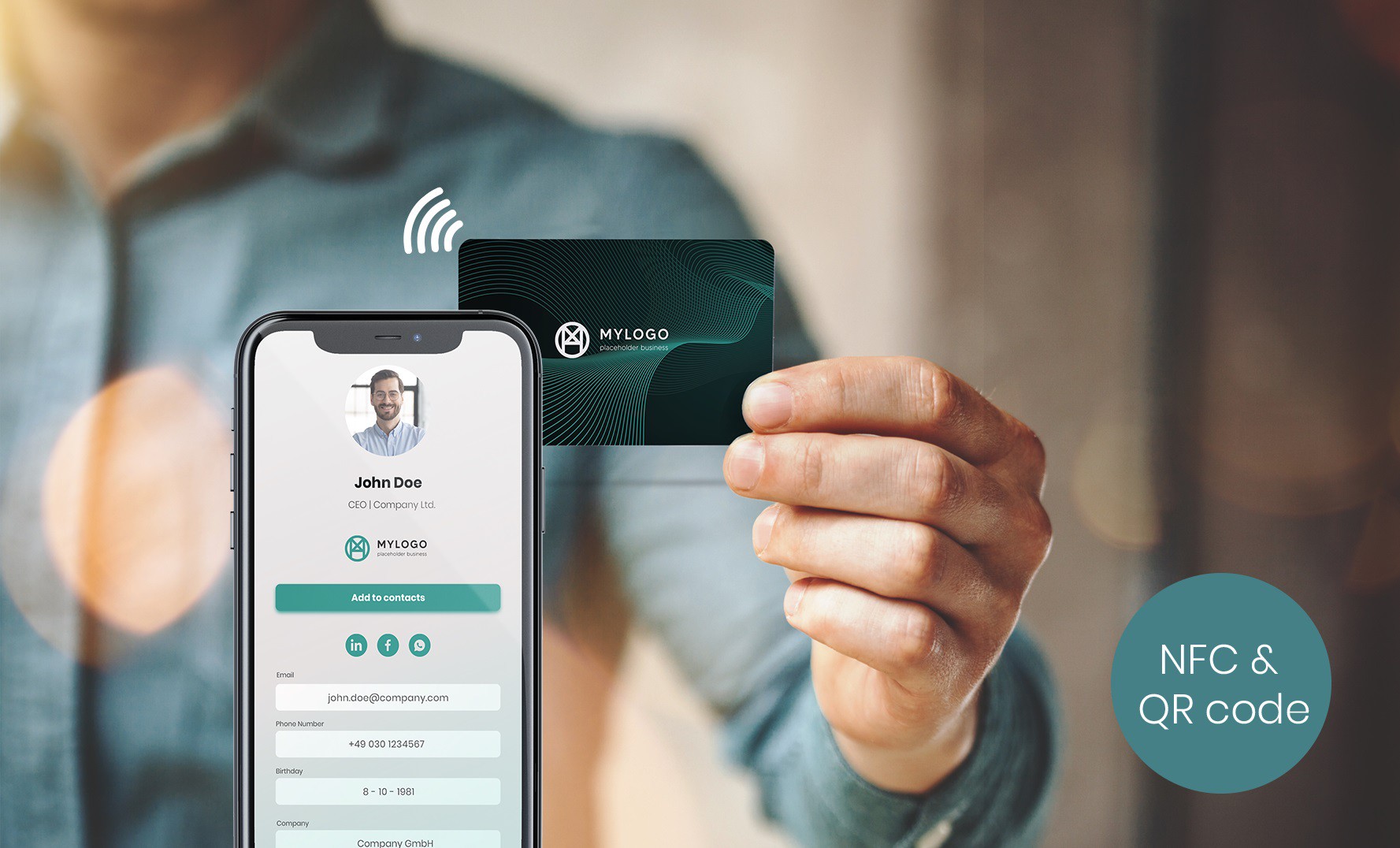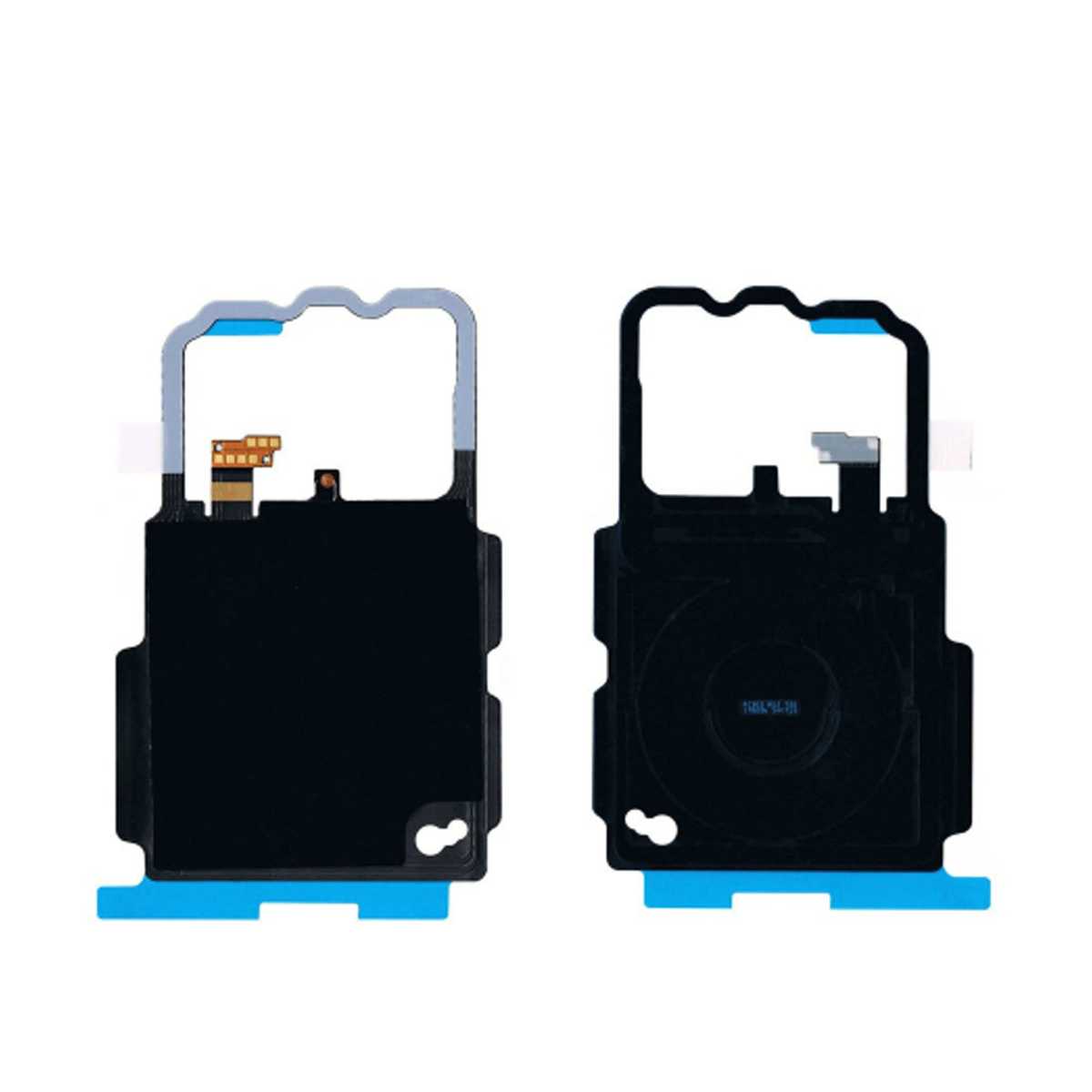Introduction
Welcome to the world of Near Field Communication (NFC), a short-range wireless technology that is revolutionizing the way we interact with our devices and the physical world around us. NFC technology allows for seamless and secure communication between devices with just a simple touch or proximity. From mobile payments to smart home automation, NFC has become an essential part of our daily lives.
NFC stands for Near Field Communication, and it uses electromagnetic field induction to enable communication between devices that are in close proximity to each other. It operates on the principles of radio frequency identification (RFID) and works in the frequency range of 13.56 megahertz. NFC technology is found in various devices such as smartphones, tablets, and even credit cards.
The primary goal of NFC is to simplify and streamline various tasks by eliminating the need for physical contact or complicated set-up processes. With NFC, users can quickly and effortlessly transfer data, make payments, access information, and perform various other actions just by bringing their device close to an NFC-enabled object.
In this article, we will explore the fascinating world of NFC technology, delve into its working mechanism, discuss its benefits and applications, and also consider the security considerations associated with its use. By the end of this article, you will have a comprehensive understanding of NFC and its role in shaping the future of technology.
What is NFC?
Near Field Communication (NFC) is a wireless communication technology that allows devices to communicate with each other and exchange data when they are in close proximity, typically within a few centimeters or inches. NFC operates on the principles of magnetic field induction and utilizes the radio frequency identification (RFID) technology.
NFC enables seamless and secure communication between devices, making it possible to transfer data, initiate transactions, and interact with various objects or systems. It provides a convenient and efficient way to connect devices without the need for physical contact or complex configuration processes.
One of the distinguishing features of NFC is its simplicity. Unlike other wireless technologies like Wi-Fi or Bluetooth, NFC does not require manual pairing or cumbersome setup procedures. Instead, NFC devices can establish a connection simply by bringing them close together, often with just a single tap or touch.
Moreover, NFC is a two-way communication technology. This means that once a connection is established between two NFC-enabled devices, they can exchange data back and forth. This bidirectional communication opens up a wide range of possibilities for various applications and use cases.
NFC technology is being incorporated into a myriad of devices and objects, including smartphones, tablets, credit cards, transit cards, loyalty cards, and even everyday items like posters, stickers, and advertisements. By embedding NFC chips or tags into these objects, they become “smart” and capable of interacting with NFC-enabled devices.
As NFC continues to gain popularity, it is becoming increasingly integrated into our daily lives. From making contactless payments at retail stores to accessing digital content or unlocking doors with a simple tap of our smartphones, NFC is transforming the way we interact with technology and the physical world around us.
How does NFC work?
Near Field Communication (NFC) technology operates on the principles of electromagnetic field induction to enable communication between NFC-enabled devices. It uses an electromagnetic field to transmit data between two devices when they are brought close together, typically within a range of a few centimeters.
There are two modes of operation in NFC: active and passive. In active mode, both devices generate an electromagnetic field and can send and receive data. In passive mode, one device generates the field, and the other device uses that field for communication.
NFC utilizes the concept of inductive coupling, where an alternating current (AC) is passed through a coil to create an electromagnetic field. This field induces a voltage in the coil of the receiving device, allowing for communication between the two devices.
When an NFC-enabled device, such as a smartphone, is brought close to another NFC-compatible device or object, the devices’ NFC antennas come into range of each other. This proximity triggers the identification process, and the devices start to exchange information. The NFC antennas in the devices generate the electromagnetic field required for communication.
During the communication process, NFC uses a set of protocols to establish a connection, exchange data, and manage the transaction. These protocols include the ISO/IEC 14443 and ISO/IEC 18092 standards, which define the physical and data-link layers of NFC communication.
NFC communication can occur in two modes: read/write mode and peer-to-peer mode. In read/write mode, one device, such as a smartphone, acts as the initiator and reads data from or writes data to an NFC tag or object. In peer-to-peer mode, two NFC-enabled devices can communicate and exchange data between each other, allowing for more complex interactions.
NFC technology supports a variety of data transfer methods, including touch-based data exchange, where the user physically taps their NFC-enabled device against an NFC tag or another device, and proximity-based data exchange, where the devices are brought close to each other without physical contact.
Overall, NFC technology provides a simple and efficient way to establish a connection and transfer data between devices, enabling a wide range of applications in various industries, including mobile payments, access control, transportation, healthcare, and more.
The Basics of NFC Technology
Near Field Communication (NFC) technology is based on the principles of radio frequency identification (RFID) and operates on the 13.56 megahertz frequency range. It allows for short-range wireless communication between NFC-enabled devices, typically within a few centimeters or inches. Understanding the basic components and functionality of NFC is essential to comprehend its capabilities and applications.
At its core, NFC technology relies on electromagnetic field induction to enable communication. There are two primary components involved in NFC communication: the initiator and the target. The initiator is the device that actively generates the electromagnetic field and initiates the communication process. This device is usually a smartphone or another NFC-enabled device. The target, on the other hand, is the device that responds to the initiator by using the received electromagnetic field to communicate back. NFC tags or other NFC-enabled objects can act as targets.
NFC operates in two modes: active mode and passive mode. In active mode, both the initiator and the target generate their own electromagnetic fields, allowing for bi-directional communication. This mode is typically used for peer-to-peer communication between two NFC-enabled devices, such as transferring files or exchanging contact information. In passive mode, only the initiator generates the electromagnetic field, and the target uses the received field to communicate. This mode is commonly used when interacting with NFC tags, such as making mobile payments or accessing digital content.
NFC communication occurs through the exchange of data packets. These data packets contain information such as commands, responses, and payload data. NFC employs different protocols to ensure smooth and secure communication. The ISO/IEC 14443 standard governs communication with NFC tags and defines how data is exchanged between the initiator and the target. The ISO/IEC 18092 standard, also known as NFCIP-1, covers peer-to-peer communication between NFC-enabled devices.
One unique characteristic of NFC technology is its ability to establish connections quickly and effortlessly. The devices can connect by simply bringing them close together, often with a tap or a touch. This feature makes NFC ideal for quick data transfer, contactless payments, and various other applications that require seamless user interaction.
NFC tags play a crucial role in NFC technology. These small, programmable devices contain an NFC chip and an antenna. They can store and transmit information to NFC-enabled devices. NFC tags come in various forms, such as stickers, cards, or key fobs. They can be placed on merchandise, posters, or other physical objects to provide users with additional information or enable specific actions when they interact with their NFC-enabled devices.
The basics of NFC technology lay the foundation for the numerous possibilities and applications it offers. From mobile payments and ticketing to smart home automation and healthcare applications, NFC continues to evolve and transform the way we interact with our devices and the world around us.
NFC Data Transmission
Near Field Communication (NFC) technology allows for secure and efficient data transmission between NFC-enabled devices. Whether it’s transferring files, making payments, or exchanging information, NFC facilitates seamless communication. Understanding how data is transmitted via NFC is essential to grasp the capabilities and limitations of this technology.
When an NFC-enabled device, referred to as the initiator, is brought close to another NFC-enabled device or object, the devices establish a connection through a process called “handshaking.” This process involves exchanging specific commands and responses to establish a communication link. Once the connection is established, the devices can begin transmitting data.
NFC uses electromagnetic field induction to transmit data between devices. The initiator and the target exchange data by modulating the electromagnetic field generated by their respective antennas. The data is sent as individual packets and follows a specific data transfer protocol, such as the ISO/IEC 14443 or ISO/IEC 18092 standards.
NFC offers two modes of data transmission: read/write mode and peer-to-peer mode. In read/write mode, the initiator reads data from or writes data to an NFC tag or object. For example, a smartphone can read product information from an NFC-tagged poster or write data to an NFC-enabled door lock to grant access. In peer-to-peer mode, two NFC-enabled devices can exchange data between each other. This mode allows for more complex interactions, such as sharing files or initiating communication between devices.
The data transmitted via NFC can vary depending on the application or use case. This data may include text, URLs, contact information, payment credentials, or even commands to control external devices. NFC supports a range of data transfer methods, such as touch-based data exchange, where the devices physically touch or tap against each other, or proximity-based data exchange, where the devices are brought close to each other without direct contact.
NFC data transmission typically occurs at a relatively slow rate compared to other wireless technologies like Bluetooth or Wi-Fi. The typical data transfer rate of NFC is up to 424 kilobits per second. While this may seem slower compared to other wireless technologies, NFC’s focus is on short-range communication within a few centimeters, prioritizing convenience and security over speed.
One key advantage of NFC data transmission is its inherent security features. NFC uses short-range communication, making it difficult for attackers to intercept or exploit the transmitted data. Additionally, NFC supports encryption and authentication protocols to ensure secure data exchange, protecting user information and preventing unauthorized access.
NFC data transmission has opened up a wide range of applications in various industries, including mobile payments, transportation, access control, healthcare, and more. Its simplicity, security, and compatibility with existing contactless technologies have made it a popular choice for businesses and consumers alike. As NFC technology continues to evolve, we can expect more innovative ways to utilize its data transmission capabilities in the future.
The Role of NFC Tags
Near Field Communication (NFC) tags play a crucial role in expanding the capabilities and applications of NFC technology. These small, programmable devices contain an NFC chip and an antenna, allowing them to store and transmit information to NFC-enabled devices. NFC tags offer a wide range of functionalities and serve as the bridge between the physical and digital world.
NFC tags come in various forms, such as stickers, cards, or key fobs. They can be attached to objects, embedded in products, or placed in specific locations to provide users with additional information or enable specific actions when they interact with their NFC-enabled devices.
One of the primary functions of NFC tags is to store data. They can hold a variety of information, including text, URLs, contact information, product details, or even commands to perform certain actions on the user’s device. By tapping or bringing their NFC-enabled device close to an NFC tag, users can access this stored data, launch specific applications, or perform predefined actions.
NFC tags can also be programmed to trigger actions based on the user’s interaction. For example, an NFC tag in a museum exhibit can prompt the user’s device to display detailed information about the artwork or play an audio tour. In a retail setting, NFC tags placed on products can provide customers with product specifications, reviews, or discounts when they tap their device onto the tag.
Another significant role of NFC tags is in enabling contactless payments. NFC-enabled payment terminals, such as those used in mobile wallets or contactless credit cards, use NFC technology to communicate with the user’s device or card. By tapping their device or card onto the NFC reader, users can complete transactions swiftly and securely, without the need for physical contact or the manual entry of payment information.
Besides their use in information sharing and payments, NFC tags also find applications in access control and authentication systems. NFC-enabled door locks, for example, can be programmed to grant access to authorized individuals when they tap their NFC-enabled device or NFC card against the lock. This eliminates the need for physical keys and provides a more convenient and secure access solution.
NFC tags are versatile and can be programmed and reprogrammed as per specific requirements. This flexibility allows for customization and adaptation to various situations or changing needs. NFC tags are typically compatible with a wide range of NFC-enabled devices, including smartphones, tablets, and even certain credit cards that support NFC technology.
The role of NFC tags extends beyond the consumer sphere. Businesses and organizations can utilize NFC tags for inventory management, asset tracking, event management, and more. With the ability to store and transmit information quickly and securely, NFC tags offer efficient solutions for various industries.
In summary, NFC tags act as the enablers of NFC technology, allowing users to interact with the physical world in a digital manner. By storing and transmitting information, they provide enhanced functionalities, personalized experiences, and convenient solutions across multiple industries.
Benefits of NFC Technology
Near Field Communication (NFC) technology offers a myriad of benefits, making it a powerful and versatile wireless communication technology. From convenience to security, NFC has revolutionized the way we interact with our devices and the physical world around us. Let’s explore some of the key benefits of NFC technology:
1. Convenience: NFC provides a seamless and effortless way to connect and communicate between devices. With a simple tap or touch, users can initiate actions such as transferring files, making payments, or accessing information. NFC eliminates the need for complex pairing procedures or manual configuration, making it user-friendly and convenient.
2. Speed: NFC enables quick data transfer, typically within milliseconds. Compared to other wireless technologies like Bluetooth, NFC offers a faster and more efficient method of exchanging data. This speed is particularly useful for applications such as mobile payments or sharing information in real-time.
3. Security: NFC technology incorporates robust security measures to protect user data. Built-in encryption and authentication protocols ensure secure communication between NFC-enabled devices, reducing the risk of data interception or unauthorized access. Furthermore, the short-range nature of NFC communication adds an extra layer of security, as physical proximity is required for the devices to connect.
4. Versatility: NFC technology is highly versatile and compatible with a wide range of devices and applications. It can be integrated into smartphones, tablets, credit cards, wearables, and various objects or surfaces, expanding the possibilities for its use. NFC’s versatility enables its application in areas such as mobile payments, access control, transportation, healthcare, advertising, and more.
5. Interoperability: NFC technology is supported by a vast ecosystem of manufacturers, developers, and service providers. This widespread adoption ensures interoperability between different NFC-enabled devices, allowing users to enjoy the benefits of NFC regardless of the brand or operating system.
6. Offline Functionality: NFC technology can operate even when devices are not connected to the internet. This offline capability is advantageous in scenarios where internet connectivity is limited, such as in underground transportation systems or remote locations. NFC-enabled devices can still perform actions and exchange data, providing a reliable solution in various situations.
7. Cost-effective: Implementing NFC technology does not require significant infrastructure investments. NFC tags, which are affordable and can be easily deployed, offer a cost-effective solution for businesses and organizations looking to leverage NFC capabilities for various applications, from advertising and marketing to access control and inventory management.
These are just a few of the many benefits that NFC technology brings to the table. As NFC continues to evolve and gain momentum, we can expect further advancements and innovative use cases that enhance our daily lives and streamline our interactions with technology.
Applications of NFC
Near Field Communication (NFC) technology has a wide range of applications across various industries, leveraging its capabilities for seamless and secure communication. From mobile payments to access control, NFC is revolutionizing the way we interact with technology and the world around us. Let’s explore some of the key applications of NFC:
1. Mobile Payments: One of the most popular and rapidly growing applications of NFC is mobile payments. NFC-enabled devices, such as smartphones or smartwatches, can act as digital wallets, allowing users to make contactless payments simply by tapping their device on an NFC-enabled payment terminal. NFC technology ensures that transactions are quick, secure, and convenient.
2. Access Control and Security: NFC technology is widely used for access control systems in various settings, such as offices, hotels, and residential complexes. NFC-enabled cards or devices can be used to grant authorized individuals access to restricted areas or buildings. The ability to easily issue and revoke access privileges enhances security and simplifies administration.
3. Transportation and Ticketing: NFC has transformed the way we experience public transportation and ticketing systems. NFC-enabled tickets or cards allow commuters to conveniently tap their device at transit stations or buses to pay for fares. This eliminates the need for physical tickets, reduces queues, and simplifies the overall ticketing process.
4. Smart Home Automation: NFC technology can be integrated into smart home systems, allowing users to control various devices or systems with a simple tap. For example, by tapping an NFC-enabled smartphone or key fob onto an NFC tag near the front door, users can automatically turn on lights, adjust temperature settings, and even unlock the door.
5. Marketing and Advertising: NFC tags are being used in marketing and advertising campaigns to provide users with additional information or offers. By tapping their NFC-enabled devices onto NFC tags embedded within posters, products, or displays, users can access product details, promotional materials, or exclusive discounts. This interactive approach helps businesses engage with customers and deliver targeted information.
6. Healthcare: NFC technology is making waves in the healthcare industry, enhancing patient care and streamlining processes. NFC-enabled devices can be used to track medication adherence, monitor vital signs, and provide secure access to electronic medical records. NFC also enables contactless identification for patients and staff, improving efficiency and reducing the risk of errors.
7. Loyalty Programs: NFC offers a convenient and efficient way to implement loyalty programs for businesses. NFC-enabled loyalty cards or apps can be used to track customer purchases, provide personalized offers, and reward customers for their loyalty. This enhances customer engagement, improves retention rates, and encourages repeat business.
These are just a few examples of the many applications of NFC technology. As NFC continues to evolve and gain traction, its versatility and compatibility with various devices and industries will unlock even more innovative and transformative use cases in the future.
NFC vs. Bluetooth and Wi-Fi
When it comes to wireless communication technologies, Near Field Communication (NFC), Bluetooth, and Wi-Fi are commonly used options. Each technology has its strengths and weaknesses, making them suitable for different applications and scenarios. Let’s compare NFC with Bluetooth and Wi-Fi to understand their similarities and differences:
Range: NFC has the shortest range among the three technologies, typically limited to a few centimeters or inches. This short-range communication is ideal for secure and close-proximity interactions, such as making mobile payments or tapping an NFC tag. Bluetooth, on the other hand, offers a range of up to approximately 100 meters, making it suitable for wireless audio streaming or connecting devices within a room. Wi-Fi has the widest range, often extending up to several hundred meters, allowing for wireless connectivity over larger areas.
Data Transfer Speed: NFC has a relatively low data transfer rate, with speeds of up to 424 kilobits per second. It is optimized for quick and simple exchanges, such as transferring small files or making contactless payments. Bluetooth offers higher data transfer rates, with versions like Bluetooth 5.0 capable of achieving speeds of up to 2 megabits per second, making it suitable for streaming audio or transferring larger files. Wi-Fi provides even faster data transfer rates, ranging from a few megabits to several gigabits per second, facilitating high-speed internet connectivity and data-intensive tasks.
Power Consumption: NFC technology is designed to be energy-efficient, consuming minimal power. Transmitting and receiving data over short distances allows NFC-enabled devices to operate with low power requirements, which is advantageous for applications like mobile payments that require frequent use. Bluetooth, depending on the version and usage, can have moderate to high power consumption. Wi-Fi generally has higher power requirements compared to NFC and Bluetooth, as it delivers faster data transfer speeds and requires a continuous connection to transmit and receive data over longer distances.
Pairing and Connectivity: NFC offers a simple and intuitive pairing process. Devices can establish a connection by simply bringing them close together, often with a tap or touch. Bluetooth requires a manual pairing process, where users need to pair devices by entering passcodes or accepting connection requests. Wi-Fi also requires manual configuration, where users connect to Wi-Fi networks by selecting the network and entering a password. Therefore, NFC provides a more seamless and effortless experience when it comes to device connectivity.
Applications: NFC is commonly used for mobile payments, access control, and interaction with NFC tags for information retrieval or initiating actions. Bluetooth is widely used for wireless audio streaming, peripheral device connectivity (e.g., headphones, speakers, keyboards), and data transfer between devices. Wi-Fi is primarily utilized for high-speed internet access, local area network connectivity, and streaming larger media files.
Ultimately, the choice between NFC, Bluetooth, and Wi-Fi depends on the specific requirements of the application. NFC’s strengths lie in their short-range, simplicity, and secure transactions, making it suitable for quick interactions and contactless payments. Bluetooth offers a greater range and higher data transfer speeds, ideal for audio streaming and connecting devices within a broader area. Wi-Fi provides extensive coverage and high-speed connectivity, enabling internet access and data-intensive tasks over larger areas.
Security Considerations for NFC
While Near Field Communication (NFC) technology offers convenience and seamless communication, it is important to consider the security aspects associated with its use. Understanding and implementing proper security measures can help mitigate potential risks and ensure safe interactions. Here are some key security considerations for NFC:
Data Encryption: Encryption plays a vital role in securing NFC communication. Implementing strong encryption algorithms ensures that data transmitted between NFC-enabled devices is protected from unauthorized access or interception. Encryption protocols such as Advanced Encryption Standard (AES) are commonly used to safeguard sensitive information.
Authentication: NFC technology supports authentication protocols, enabling devices to verify each other’s identity before exchanging data. Mutual authentication ensures that both the initiator and the target device are legitimate and authorized to communicate. This authentication process prevents unauthorized devices from accessing sensitive information or performing malicious actions.
Secure Element: Many NFC-enabled devices incorporate a secure element, which is a tamper-resistant hardware component that stores sensitive data, such as payment credentials. The secure element provides an additional layer of security by isolating and protecting critical information. It ensures that sensitive data is not exposed to potential attacks or unauthorized access.
Secure Application Development: Proper security practices should be followed during the development of NFC-enabled applications. This includes adhering to secure coding standards, conducting regular security assessments and penetration testing, and implementing robust authentication and authorization mechanisms within the application.
Secure User Interactions: Users play a crucial role in maintaining the security of NFC transactions. It is essential to educate users about best practices, such as ensuring their devices are protected with strong passwords or biometric authentication, enabling device locking when not in use, and being cautious when tapping their devices on unfamiliar NFC tags or payment terminals.
Secure NFC Tags: NFC tags should be securely programmed and protected to prevent tampering and unauthorized access. Proper cryptographic techniques should be employed to ensure the integrity and authenticity of the information stored on NFC tags. Regular monitoring and auditing of NFC tags in public spaces can help detect any unauthorized or malicious actions.
Regular Software Updates: Keeping NFC-enabled devices and their operating systems up-to-date is crucial for security. Software updates often include bug fixes, security patches, and enhancements, preventing known vulnerabilities from being exploited.
Vigilance against Eavesdropping: NFC’s short-range communication provides inherent protection against long-distance eavesdropping. However, it is important to remain cautious and be aware of potential risks in close proximity scenarios. Attackers may attempt to intercept NFC communication by using unauthorized devices or tampering with NFC tags. Users should be mindful of their surroundings and avoid tapping their devices on suspicious or unknown NFC tags.
By considering these security considerations, implementing appropriate measures, and fostering user awareness, NFC technology can be utilized safely and securely across a wide range of applications. Adhering to best security practices ensures the integrity, confidentiality, and availability of data exchanged using NFC, providing users with a safe and trustworthy experience.
Future of NFC Technology
Near Field Communication (NFC) technology has come a long way since its inception and continues to evolve with exciting possibilities for the future. As NFC gains traction and becomes more integrated into our daily lives, several trends and developments indicate a promising future for this wireless communication technology.
Increased Adoption in Mobile Payments: NFC technology has gained significant momentum in the mobile payment industry, with the rise of digital wallets and contactless payments. As more consumers embrace the convenience and security of mobile payments, the adoption of NFC-enabled smartphones and payment terminals will continue to grow. This trend will further push the boundaries of NFC technology and transform the way we transact.
Enhanced Interaction and Context-Awareness: NFC technology has the potential to enhance the interaction between devices and the physical world. As IoT (Internet of Things) devices continue to proliferate, NFC can act as a seamless and secure communication channel, enabling devices to exchange information and trigger actions based on the user’s context. This context-awareness can lead to personalized experiences and a more integrated digital ecosystem.
Integration with Biometric Authentication: The integration of NFC technology with biometric authentication, such as fingerprint or facial recognition, can provide an additional layer of security and convenience. This combination can enable secure and contactless authentication for various applications, such as mobile payments, access control, and identity verification. NFC’s short-range communication makes it well-suited for these use cases, ensuring secure transactions and user authentication.
Expansion of NFC-enabled Wearables: The popularity of wearable devices, such as smartwatches and fitness trackers, continues to grow. NFC technology is being integrated into these wearable devices, enabling users to make payments, access information, and interact seamlessly with other NFC-enabled devices. NFC-enabled wearables will further integrate into our daily lives, providing convenient and efficient ways to interact with technology on the go.
Growth in IoT Applications: The Internet of Things (IoT) is expanding rapidly, connecting various devices and enabling them to communicate and share data. NFC technology can play a vital role in IoT applications by providing a secure and efficient method of device-to-device communication. From smart homes and connected cars to industrial automation and healthcare systems, NFC-enabled devices can interact with each other, creating a more integrated and seamless IoT ecosystem.
Advancements in NFC-enabled Tags: NFC tags are becoming more advanced with increased memory capacity and enhanced functionality. This allows for more complex interactions, such as storing dynamic information, launching multiple actions, or integrating with cloud-based services. The evolution of NFC tags opens up new possibilities for applications in marketing, supply chain management, and other industries, enabling personalized and interactive experiences.
The future of NFC technology is bright, with endless possibilities for innovation and integration. As more industries recognize the potential of NFC and invest in its development, we can expect to see further advancements that will reshape the way we interact with technology, access information, and conduct transactions. NFC technology will continue to enhance convenience, security, and connectivity in our increasingly digital world.
Conclusion
Near Field Communication (NFC) technology has revolutionized the way we communicate, interact, and transact with our devices and the physical world around us. With its seamless connectivity, convenience, and security features, NFC has become an integral part of our daily lives.
From mobile payments to access control, NFC offers a wide range of applications across various industries. With a simple tap or touch, users can transfer data, make payments, access information, and trigger actions. NFC’s short-range communication ensures secure transactions and minimizes the risks of data interception or unauthorized access.
NFC’s future is promising, with ongoing advancements and innovations. Increased adoption of mobile payments, enhanced interaction through context-awareness, integration with biometric authentication, and expansion in IoT applications are some of the trends that will shape the future of NFC technology.
As NFC technology continues to evolve, it is essential to emphasize the importance of implementing proper security measures. Data encryption, authentication protocols, and user vigilance are crucial for maintaining the integrity and confidentiality of NFC communication. By following best security practices, we can ensure that NFC technology remains secure and reliable.
The integration of NFC technology with wearables, such as smartwatches, and the advancements in NFC-enabled tags will further enrich NFC experiences and expand its functionality. NFC’s versatility and interoperability make it compatible with a wide range of devices, creating a more connected and integrated digital ecosystem.
Ultimately, NFC technology empowers us to interact with technology and the physical world in a simpler, safer, and more efficient way. As NFC adoption grows and new applications emerge, it will continue to shape the future of technology, enhancing the way we live, work, and connect.







